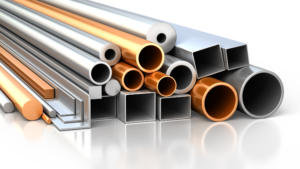Tube Bending: A Guide to Techniques and Applications
At AWC Industries, precision tube bending is at the core of our manufacturing services. This intricate process requires advanced technology, skilled craftsmanship, and a deep understanding of materials to meet the needs of various industries. Whether you’re designing components for aerospace, automotive, or industrial applications, tube bending plays a crucial role in delivering high-quality results. Let’s explore the essentials of tube bending, its techniques, and its broad applications.
What Is Tube Bending?
Tube bending is the process of shaping metal tubes into specific angles, curves, and configurations without compromising the structural integrity of the material. By utilizing specialized machinery and tools, manufacturers can create precise bends that meet the specifications of a project.
Common materials used for tube bending include:
- Stainless steel
- Aluminum
- Brass
- Copper
- Carbon steel
Key Tube Bending Techniques
- Rotary Draw Bending
This method is ideal for applications requiring tight radii and consistent results. Rotary draw bending uses a fixed die and a bending die to form the tube around a predefined radius. It’s widely used in the automotive and aerospace sectors for components like roll cages and exhaust systems. - Mandrel Bending
Mandrel bending involves inserting a mandrel inside the tube to prevent collapse or wrinkling during the bending process. This technique is perfect for achieving smooth, wrinkle-free bends in thin-walled or high-precision applications, such as medical devices and HVAC systems. - Compression Bending
In this technique, the tube is clamped and pushed against a stationary die to achieve the desired angle. While cost-effective, it’s more suited for simpler bends and larger radii. - Roll Bending
Roll bending uses a series of rollers to gradually curve the tube. This method is commonly employed for creating large-radius bends for structural components and architectural designs.
Benefits of Professional Tube Bending
- Enhanced Strength: Proper bending techniques ensure that the tube maintains its strength and functionality.
- Design Flexibility: Customized bends allow for complex and innovative designs.
- Cost Efficiency: Precision bending reduces material waste and eliminates the need for additional fittings or welds.
- Time Savings: Automated bending processes expedite production timelines without compromising quality.
Applications of Tube Bending
Tube bending is indispensable in numerous industries, including:
- Automotive: Exhaust systems, fuel lines, and roll cages.
- Aerospace: Hydraulic systems, structural components, and air ducts.
- Construction: Handrails, scaffolding, and architectural elements.
- Industrial Equipment: Heat exchangers, conveyor systems, and machine frames.
- Furniture Design: Sleek and ergonomic metal frames for chairs and tables.
Why Choose AWC Industries for Tube Bending?
At AWC Industries, we bring decades of expertise to every tube bending project. Our state-of-the-art equipment and skilled team ensure precision and consistency in every bend, regardless of complexity. We prioritize quality control, on-time delivery, and customer satisfaction to exceed your expectations.
Whether you need prototypes, small production runs, or large-scale manufacturing, AWC Industries has the capability and expertise to bring your vision to life. Contact us today to learn how our tube bending services can support your project!

